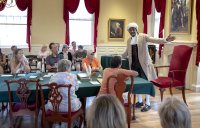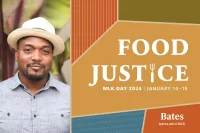
From Assistant Professor of Theater Cliff Odle’s perspective, the artifice of theater is often the best way to expose the truth of the human condition.
In the case of the play The Luck of the Irish, which he and his students spent the first part of fall 2021 mounting, it’s also providing a history lesson in redlining, American racism, and a challenge to the audience, to ask their own questions.
“Theater works best when it is that sort of mirror, not so much to answer questions, but ask them and ask them consistently in a way that stays with people,” Odle said during a recent campus panel discussion about racial justice and housing inequity, inspired by the student production. “And so there’s a lot of questions here to ask.”
The Luck of the Irish, a 2013 play by Kirsten Greenidge, alternates between 1950s and present-day Boston, and focuses on two families and their conflict over a house. Located in a majority white upscale neighborhood, the house had been occupied by the Taylors, an upwardly mobile Black family. It’s their home, and they paid for it, but there is a dispute over its ownership.
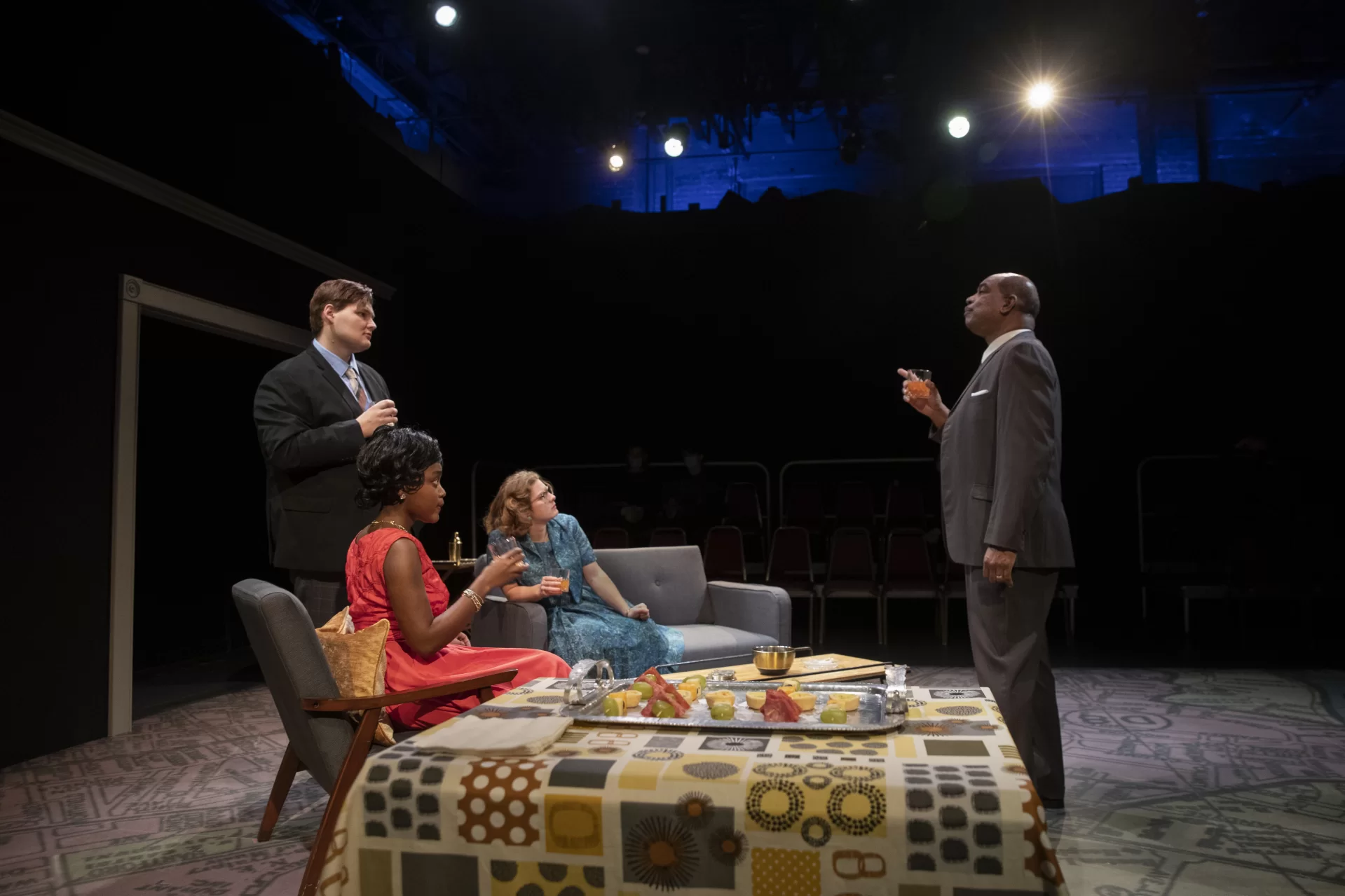
At the time of the purchase, Boston neighborhoods were kept segregated through redlining — a practice where the federal government would refuse to insure the mortgage on a house due to perceived risk — and myriad other racist practices, so the Taylors paid the less-wealthy Donovan family to ghost-buy it for them. Decades later, the Taylors’ granddaughters can’t find the deed to the house is missing, and the Donovans insist that the house belongs to them.
“It’s a story about people dealing with these things and how these things affect these individual people,” Odle said. “This particular play comes out of a long tradition of plays about African Americans looking for space, looking for a place to belong.”
The story is also a representation of what scores of Black families have gone through historically: a system that works against their fundamental human right to house and home.
Faculty from Bates and Bowdoin College came together the week before the play’s Oct. 28 opening to discuss the history, legacy, and ongoing impact of racist practices such as redlining. Sponsored by the Department of Theater and Dance, the session was organized by Visiting Assistant Professor of Theater Elizabeth Phillips and Diana Zhou ’23 of Shanghai, and moderated by Phillips.
Representing a range of disciplines and interdisciplines — from philosophy, economics, and theater, to Africana studies, rhetoric, and film and screen studies —they challenged the audience and each other to ask questions about what we, as a society, could possibly do to fix the inequities.
Jessica LaVoice, an assistant professor of economics at Bowdoin, provided a brief overview of the history of redlining in the U.S. Research has shown that, among other harms, redlining effectively and systematically reduced the ability of Black Americans to gain wealth, solidifying racial wealth disparities in American cities during the Great Migration of the 1900s.
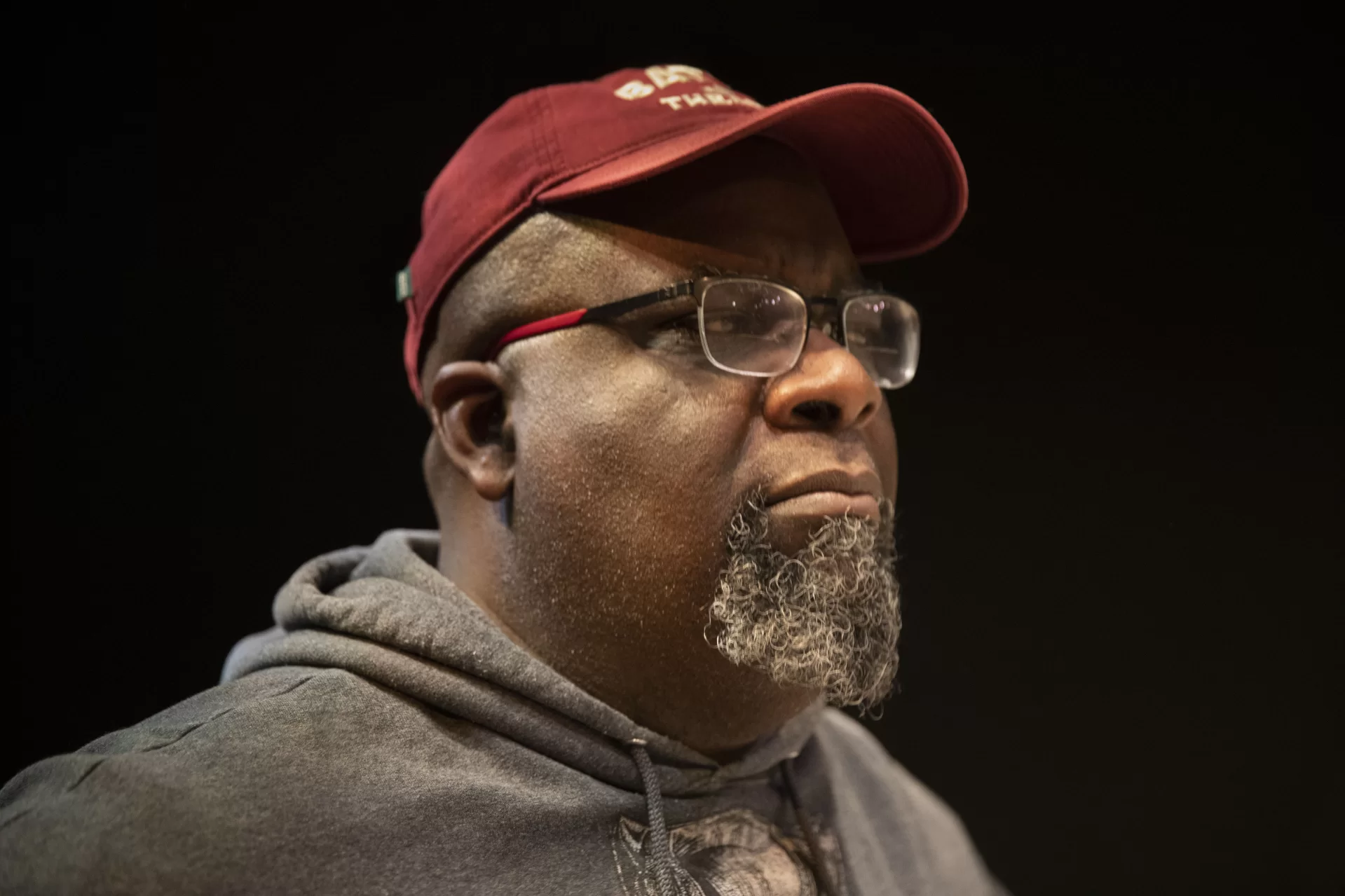
For example, by the 1940s, Black homebuyers had to pay up to 28 percent more for a home to move into a primarily white neighborhood, but once they became owners, their home value would decline by 10 percent, eroding Black wealth.
These housing injustices, LaVoice said, were of course only part of what Black families suffered. “I don’t want to oversimplify the complexities and the interactions between all these different sources of discrimination and injustices across many other aspects of American life,” LaVoice said.
Theater’s Role
For Odle, the theater and the arts can offer the beginning of a solution by opening eyes.
“What I do is I impersonate people that don’t exist. I tell people to be people they’re not, I write stories that don’t exist,” he said. “Why do I do this? Well, the artifice of course, is in order to expose the truth of the human condition: who we are, where we are, why we are.”
The Luck of the Irish, like the iconic 1959 Lorraine Hansberry play A Raisin in the Sun, “deals with this idea of belonging, this idea of home ownership, something that we all kind of take for granted or have taken for granted,” Odle said.
“Now we have generations that are in a situation where they’re not doing as well as their predecessors,” Odle continued. “I think my generation, Gen X, was one of the first to really not do as well as our fathers and mothers. I’m not — I can’t afford a house.”
And as his fellow panelists pointed out, the effects of housing insecurity go beyond not having a “place” to be; they also affect the social experience of the individual, and can depend on not just race or social class, but also factors like gender.
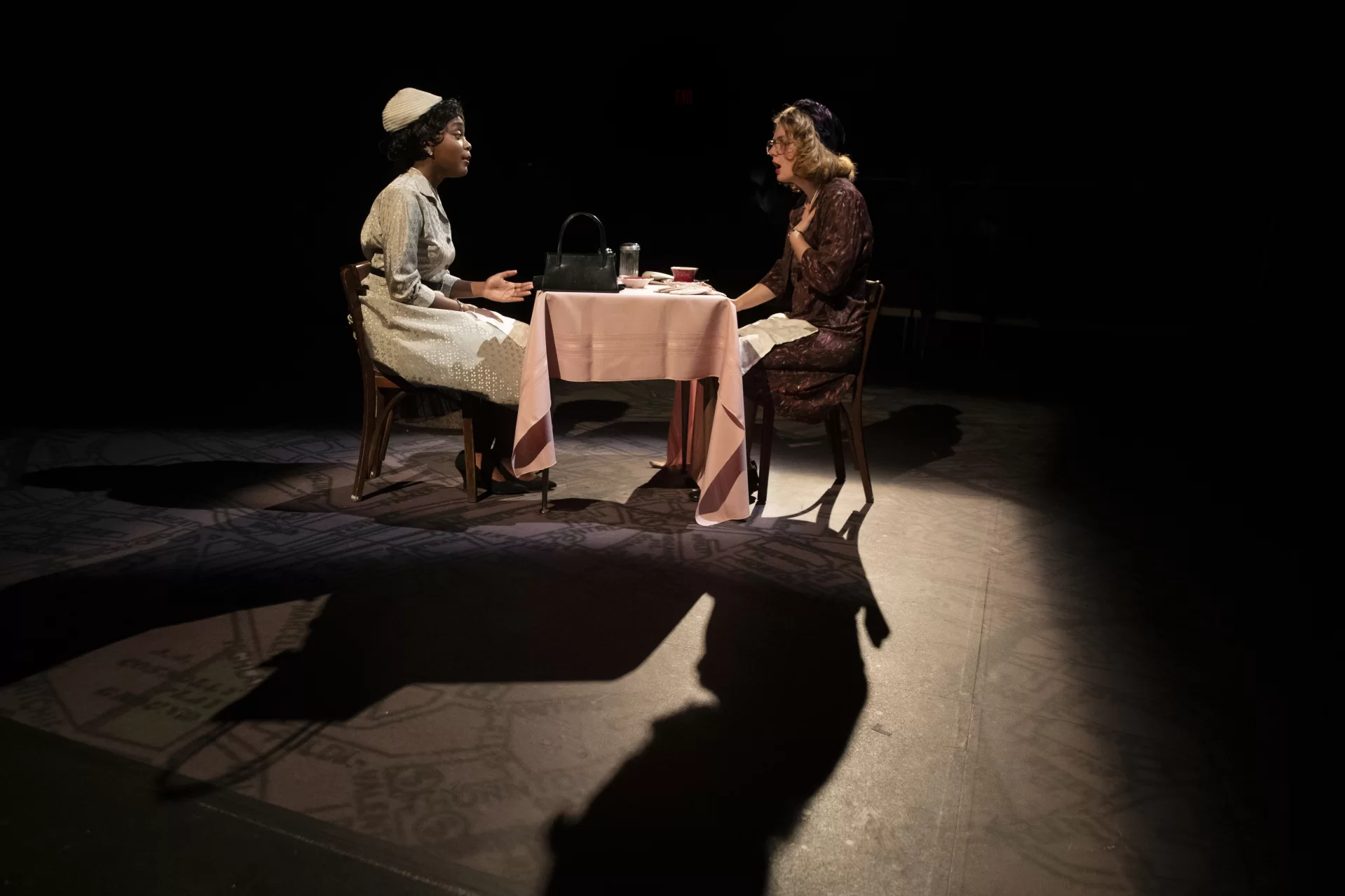
Paul Schofield, an assistant professor of philosophy, said he believes that “if you are housing insecure or if you’re experiencing homelessness, you’re excluded from society and from participating in our major social institutions in ways that are different from simply not getting your fair share of the pie.”
“Additionally, I think it’s significant that those who are housing insecure often are unable to afford the social bonds that you would expect people who have a stable household to form,” he said.
“They’re often separated from their families and their friends and their children, and those who are Black disproportionately are separated from their children. Black women often have their children taken away from them at a much higher rate,” Schofield added.
All Systems Are Not Go
Charles Nero, Benjamin E. Mays Distinguished Professor of Rhetoric, Film, and Screen Studies, said that the systems supporting the inequities can — and need to be — challenged.
“I think it’s important to know that white supremacy is created by and sustained by public policy. And so it is public policy that must constantly be critiqued and addressed.
“Public policy takes place at local levels, national levels. And we have to be present, or at least encourage presence at all of those levels with no guarantee of a win.”
Redlining and Reparations
Michael Murray, the Charles Franklin Phillips Professor of Economics, studies federal policy around low-income housing. He pointed out that the benefits of economic and social status are passed down through the generations, and so is the harm: sustained socio-economic inequity including education.
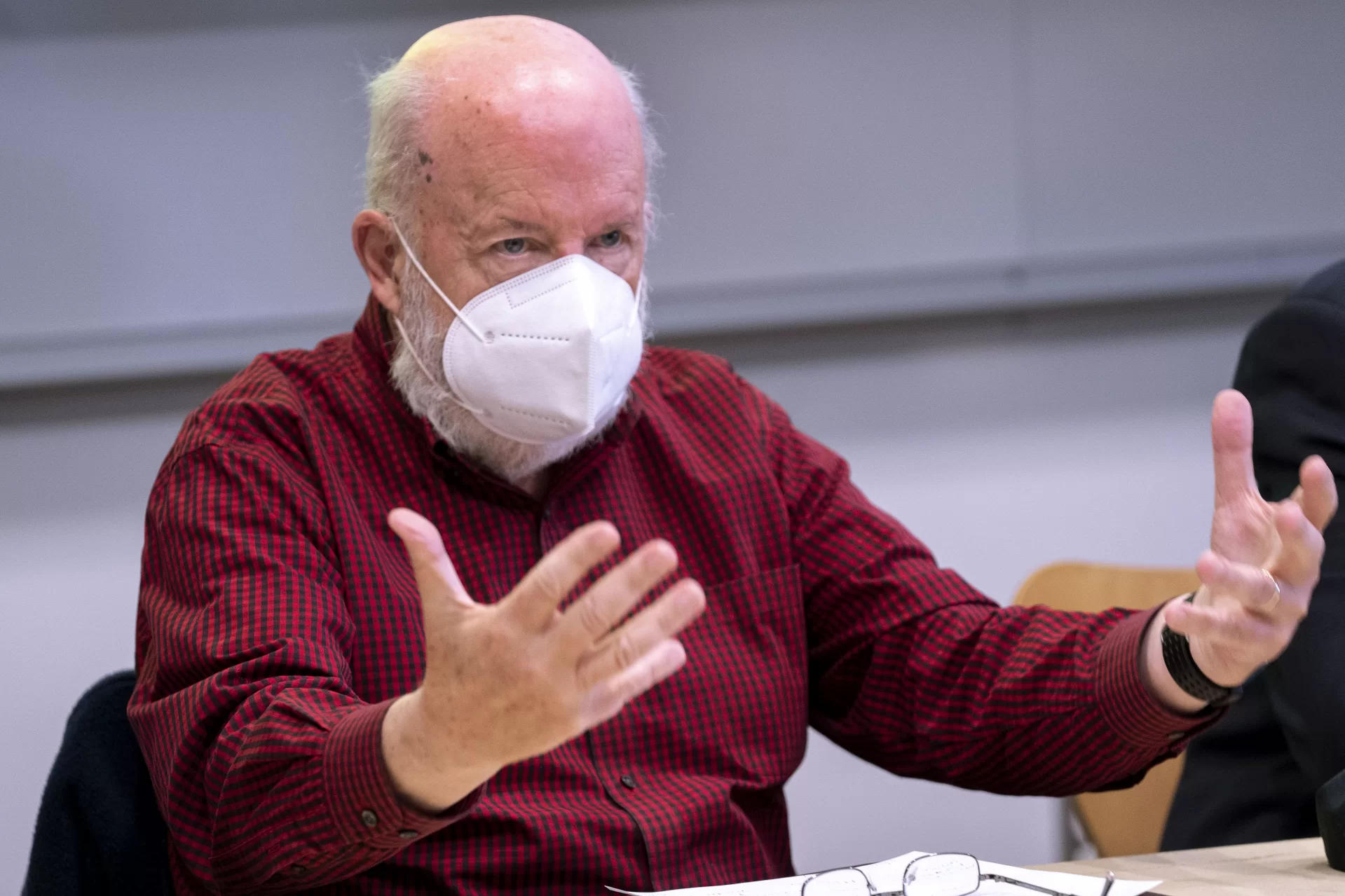
“When you look at racially segregated cities in the U.S., African American children end up with less education than in less racially segregated cities. So the housing discrimination is translating into shutting down the education channel for managing to accumulate wealth over the generations.”
But what about when a government has both created and historically maintained the policies that built those inequities?
In contemplating that painfully twisted reality, Murray had to compose himself for a moment. “There’s a legal principle that when government harms citizens, the government has an obligation to remedy those harms,” Murray said. “We need to be looking for suitable remedies.”
But how can we as a society can repair the damage done by centuries of racial segregation, economic, and social inequity, and by systems built and sustained on the exploitation of groups of people?
That’s the type of question that Susan Stark, an associate professor of philosophy who works in moral psychology and social philosophy, has pondered — specifically, what reparations for institutionalized racism might look like.
“Usually when we’re talking about reparations, we’re talking about actions that we all could take today, or our government can take today in order to repair wrongs that were done in the past,” Stark said.
That means taking moral responsibility for something that happened long ago.
But many people can’t wrap their heads around that. A familiar refrain heard among white Americans is that while “my ancestors may have hurt your ancestors, I didn’t hurt you today, so I don’t owe you anything.”
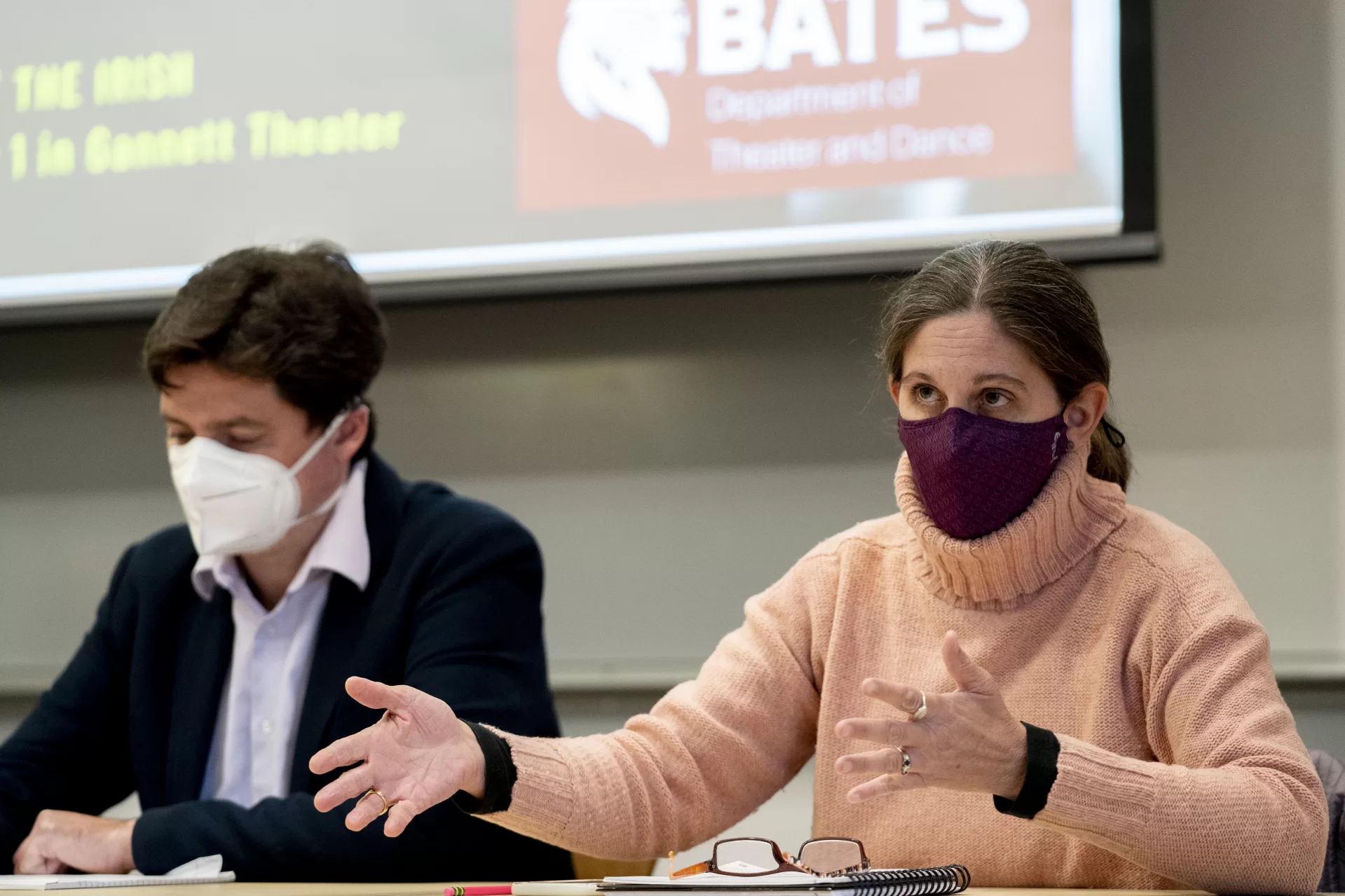
Indeed, said Stark, peoples’ ordinary thinking is “that I am only morally responsible for the things that I have control over, things that I do. If there’s an earthquake that happens far away, I’m not morally responsible for the occurrence of the harm that resulted from the earthquake. Because I didn’t cause it, I didn’t have anything to do with it.”
Race and Responsibility
The issue of reparations opens a whole new discussion about race, responsibility, and, not surprisingly, identity.
Looking at the many cultures and ethnic groups harmed and disenfranchised by American colonization, genocide, racial segregation, and historic social and economic inequity, the responsibility for reparations would land on white America.
But you need to define “whiteness” to define who bears responsibility. And defining whiteness can be “slippery,” according to Nero.
“It is the very elasticity of whiteness, which is by design how whiteness defines itself. Is whiteness race? Is whiteness ethnicity? Whiteness is everywhere and nowhere, simultaneously,” Nero said.
“I wonder about how something like that figures into a discussion about who is white and who has responsibility,” Nero added. “And whether or not even the capacity to do that is an indication of just what whiteness is. It is to name whiteness, and to specify whiteness.”
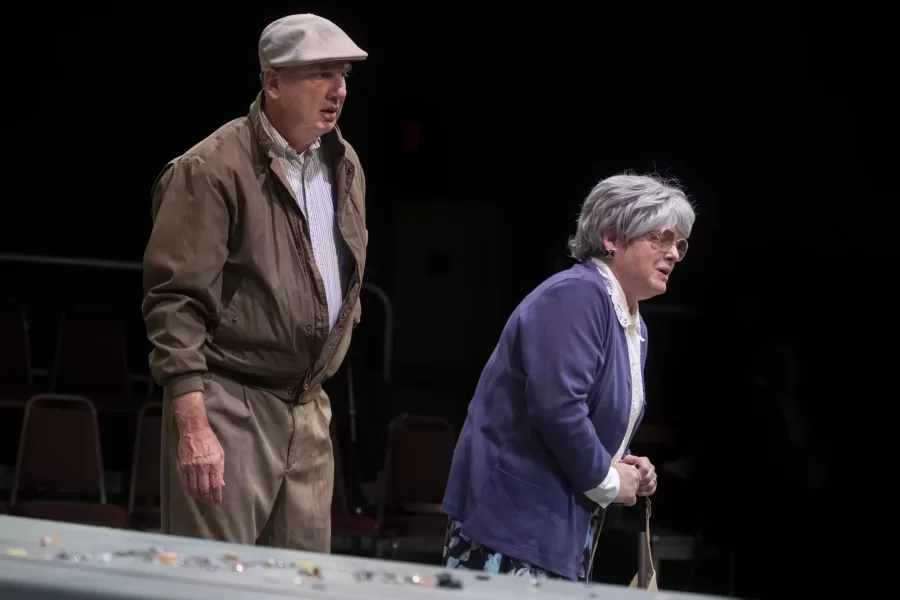
The surge in popularity of DNA tests and ethnic heritage mapping has introduced another complication to the conversation, and that is who can “claim” Black or Indigenous heritage, and therefore perhaps divest themselves of the responsibility of making reparations.
“I’ve had friends who are like, ‘Oh, I’m 3 percent black,’” Odle said. “‘Therefore I suffer too.’ And there really does need to be a definition of what this sort of whiteness thing is, and who, and how your experience in this sort of thing sort of plays into it because it is kind of a slippery thing.”
But when this “slippery” whiteness has been the cultural default for creating laws, housing, and privilege for generations, defining what it is proves tricky, Nero said.
In this conversation, it’s vital that whiteness not be the focus of the conversation, according to Stark.
“I think the important thing is to figure out a way for white people to take responsibility for the wrongs of the past, without somehow centering themselves,” Stark said.
This is why it’s so important that the conversation around racial justice and housing inequity include different voices, from different backgrounds. And why a play performed on a college campus in Maine might generate that essential conversation.
“I will go out on a limb and say by itself, a play, or the arts in general, isn’t going to change things,” Odle said. “Exposure opens up the possibility for change, and that is what we need. We need audiences that are not the same audiences, audiences that don’t normally go to see theater, audiences that know normally don’t normally go to see art. Those are the audiences that we need to come in and see this, because those are all the audiences that can become those change agents.
“Art is not going to do it by itself. It’s not designed to do that, but it is designed to get people to think, is designed to get conversations happening. It’s designed to open up doors that people will hopefully go through.”
